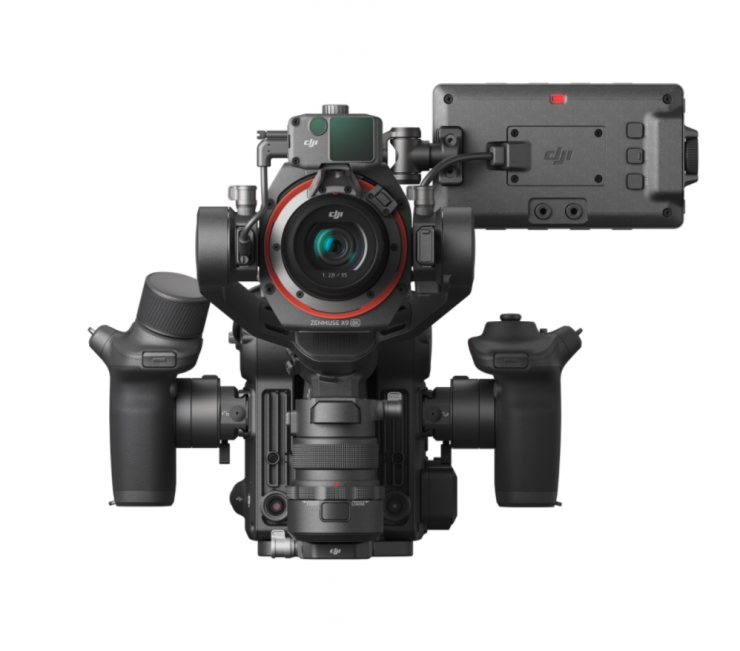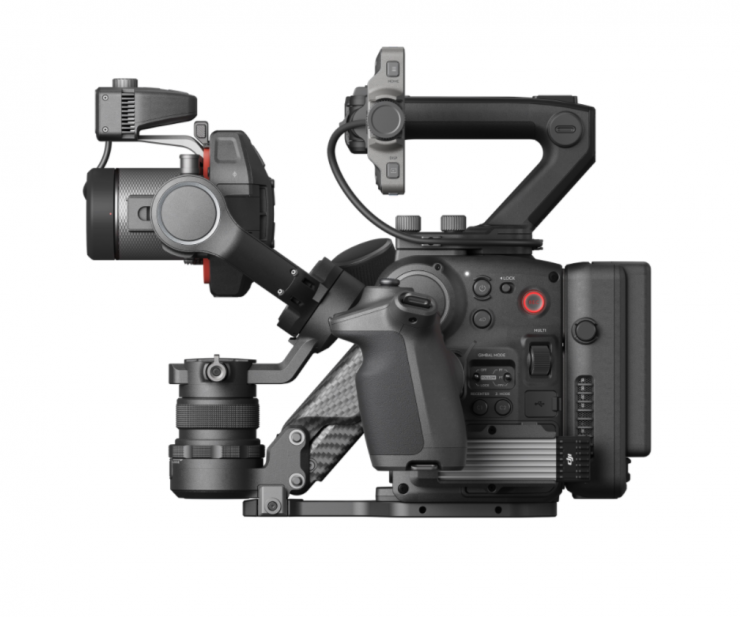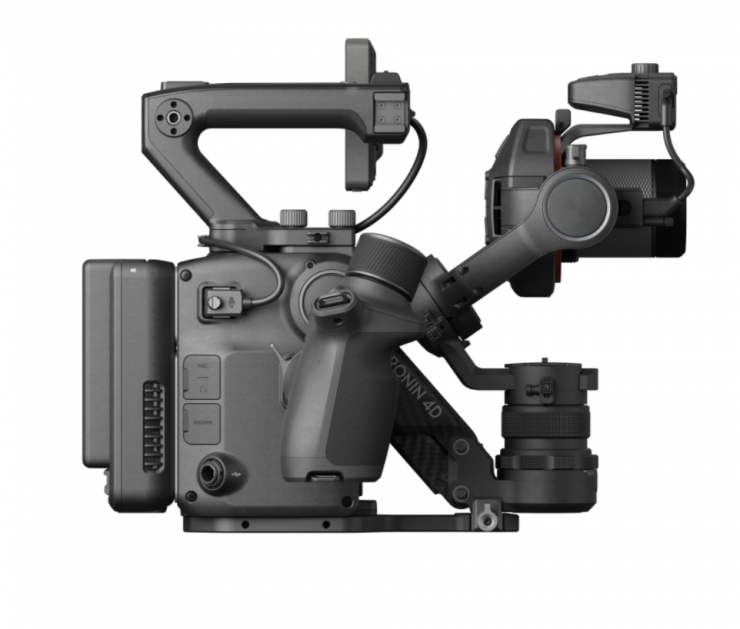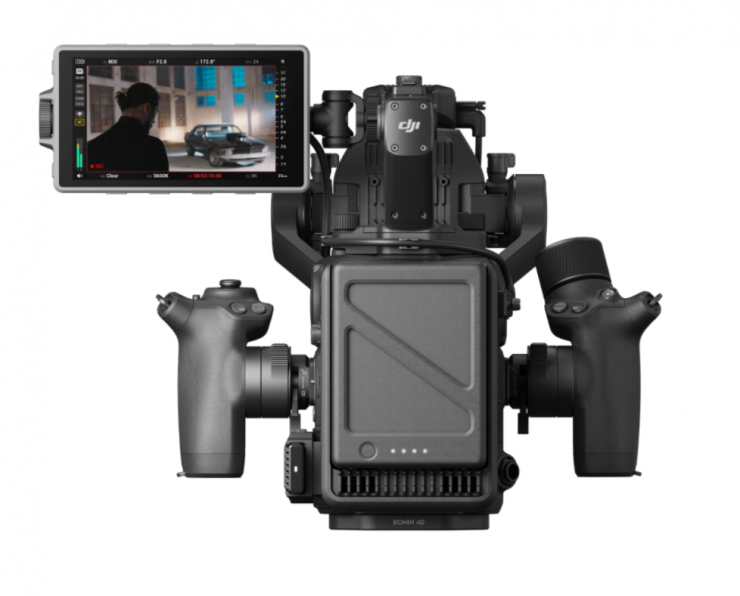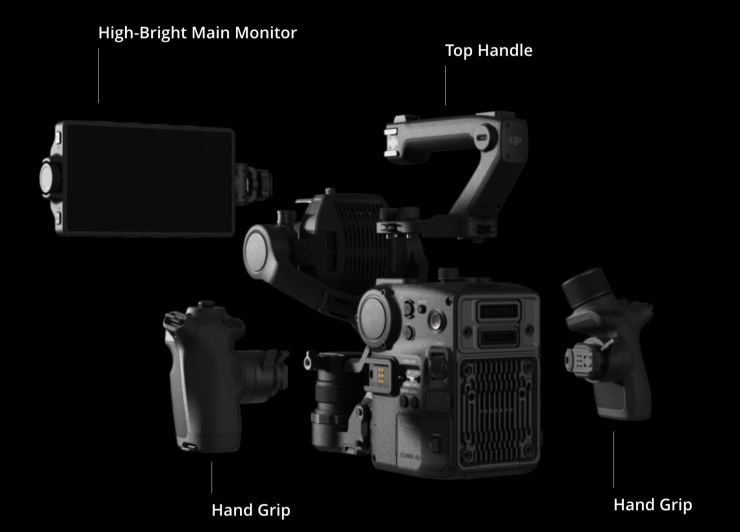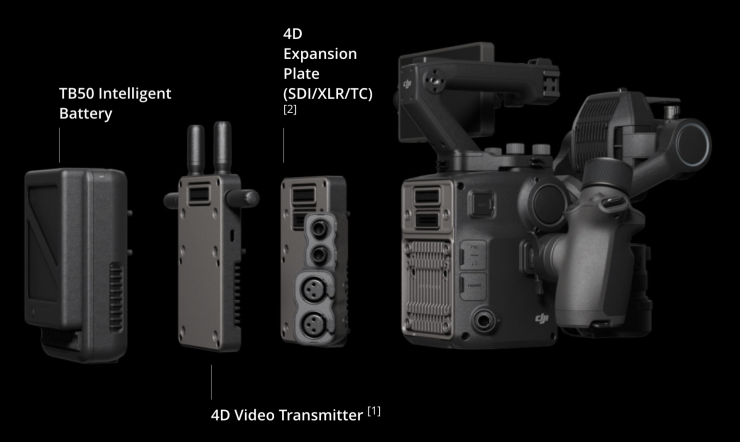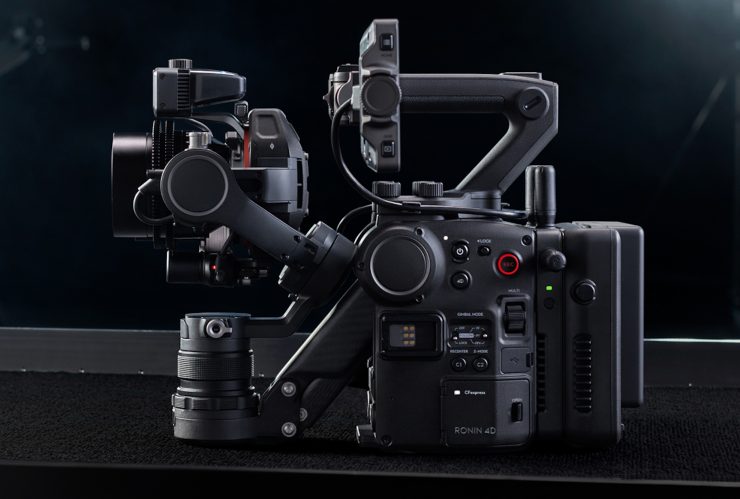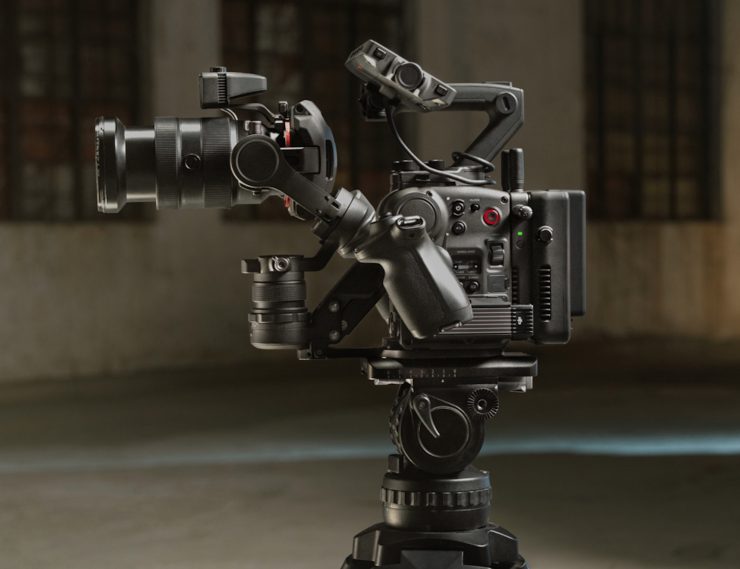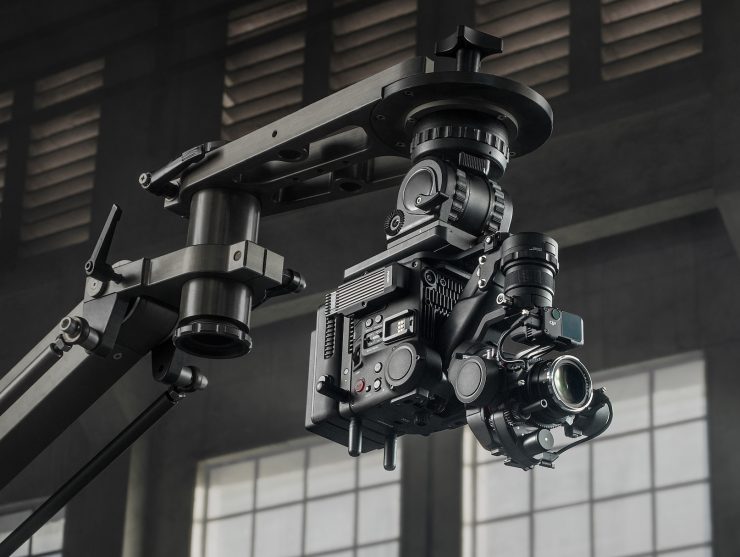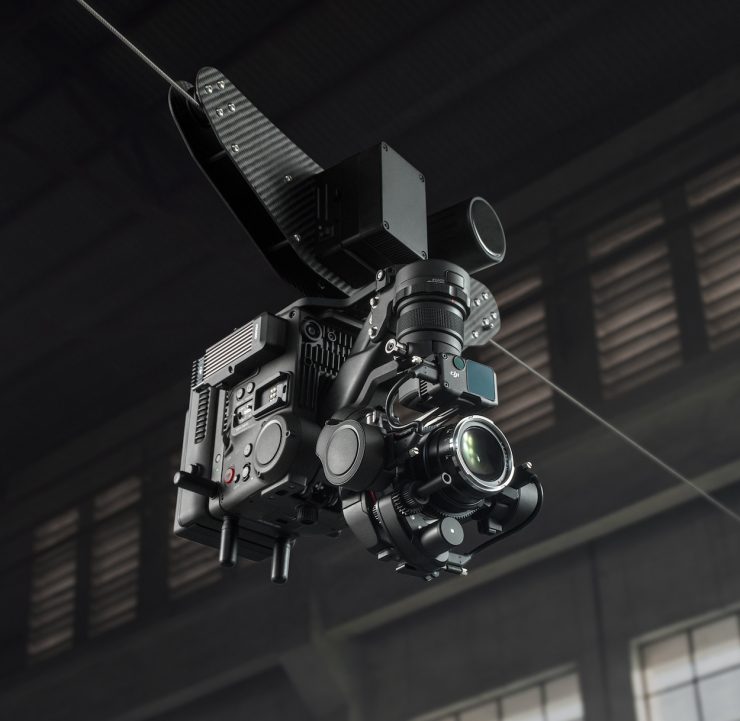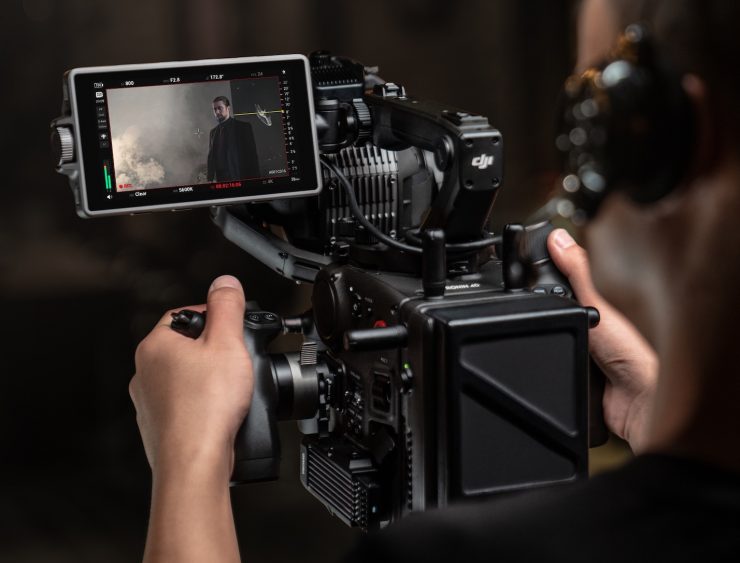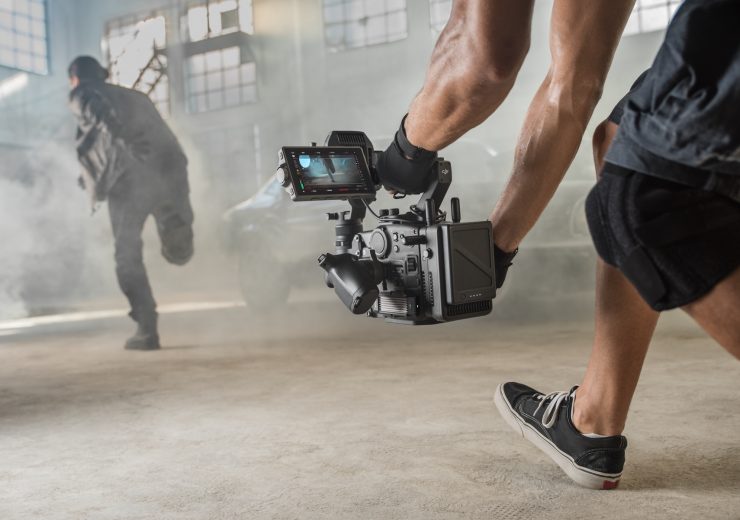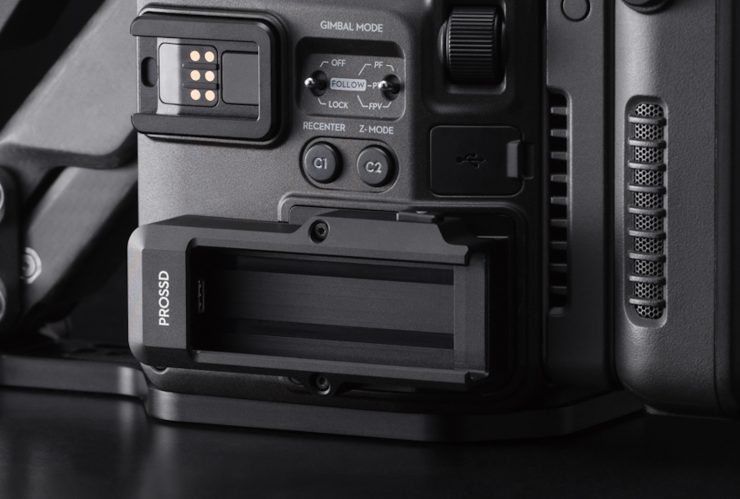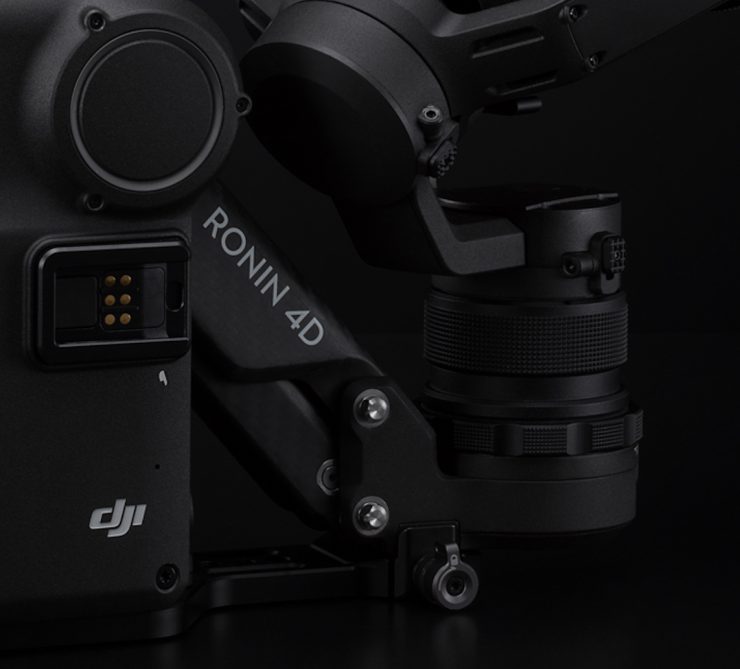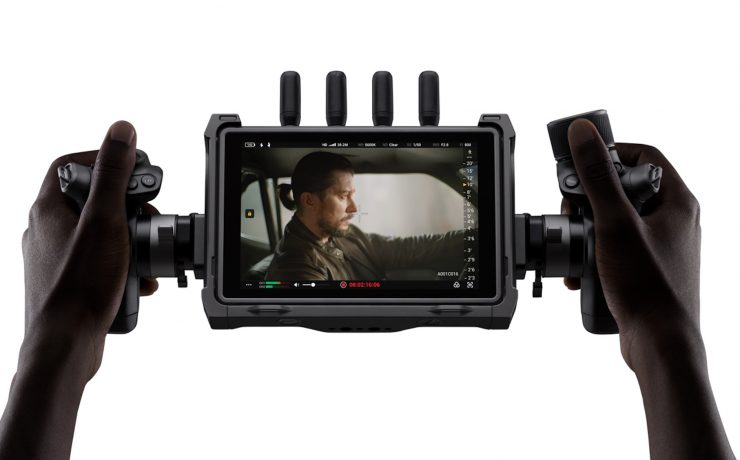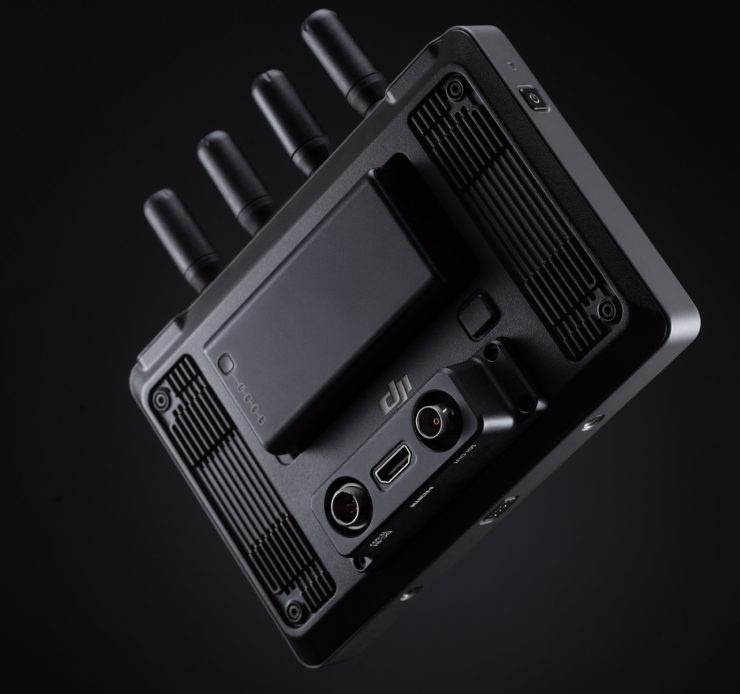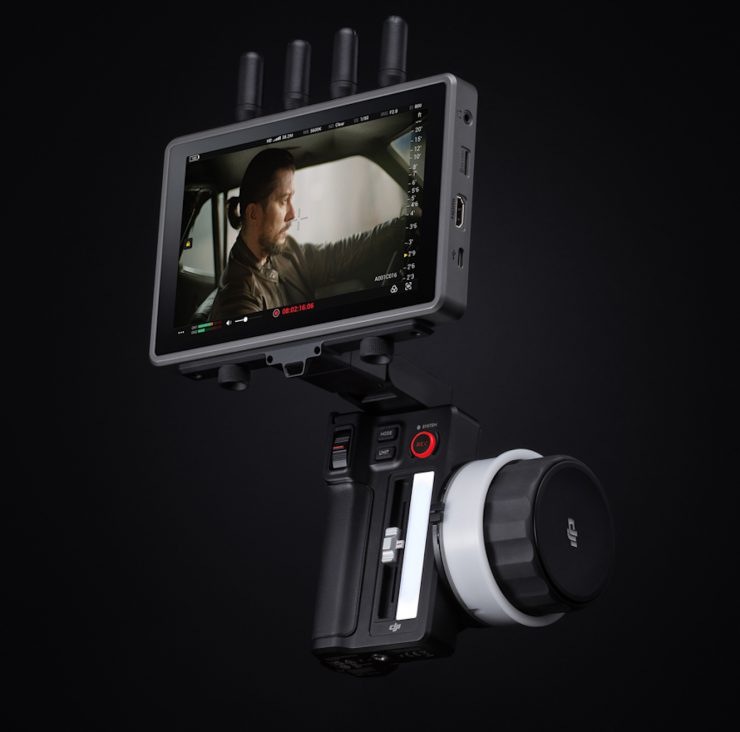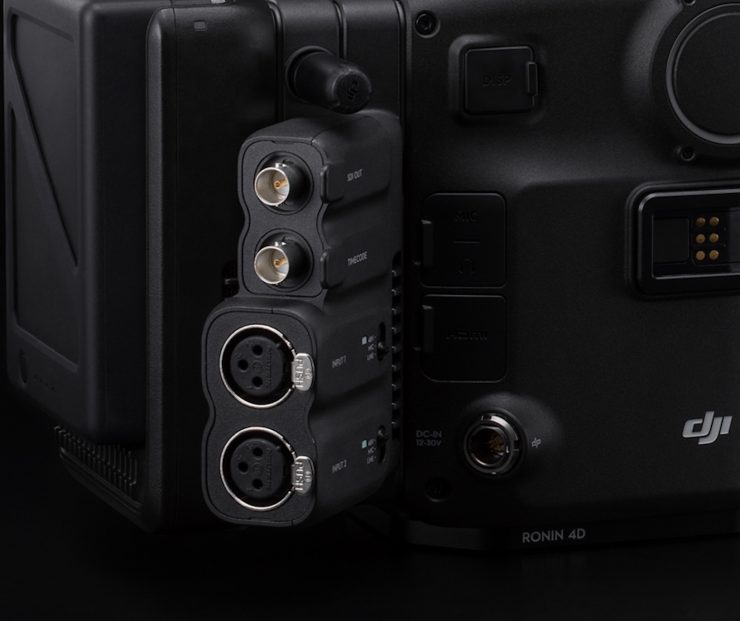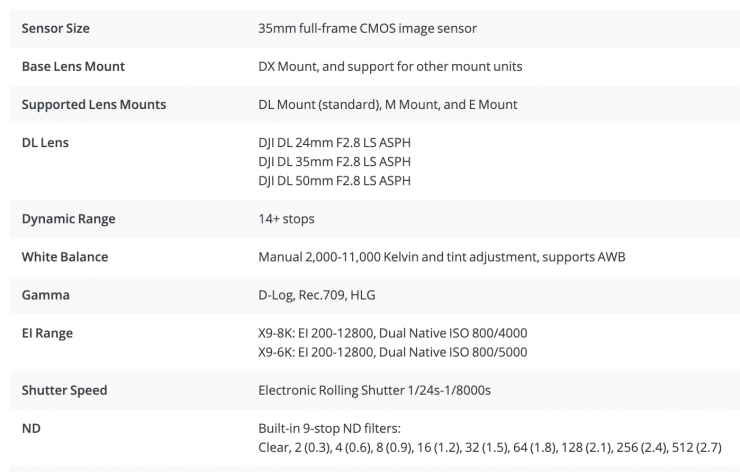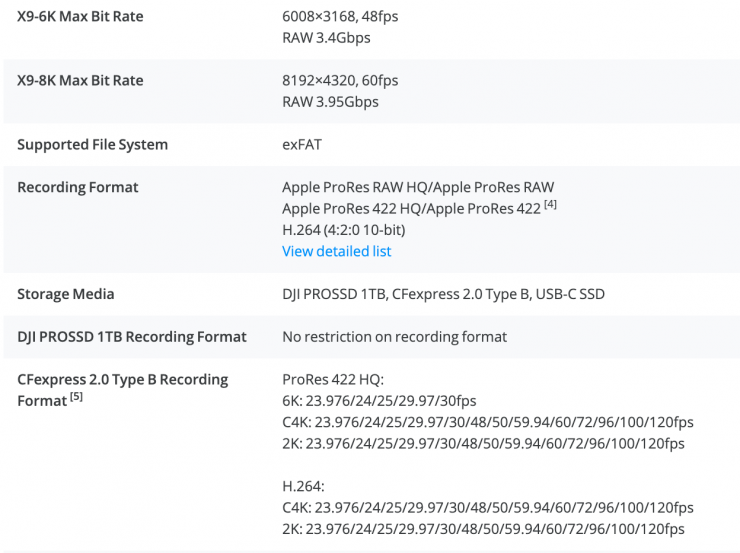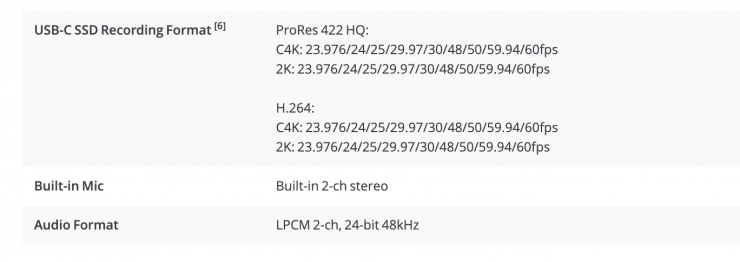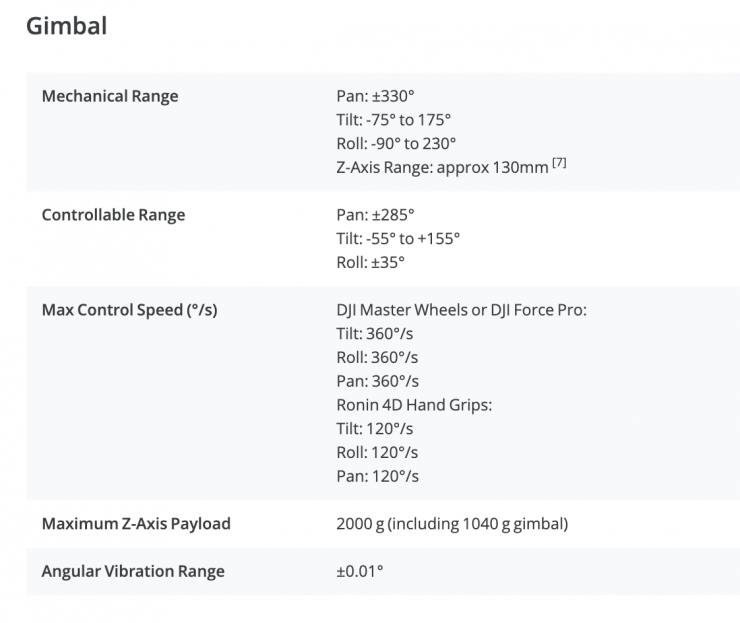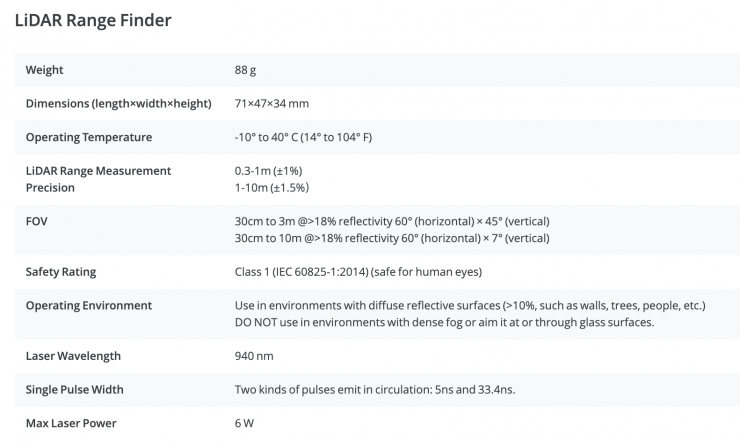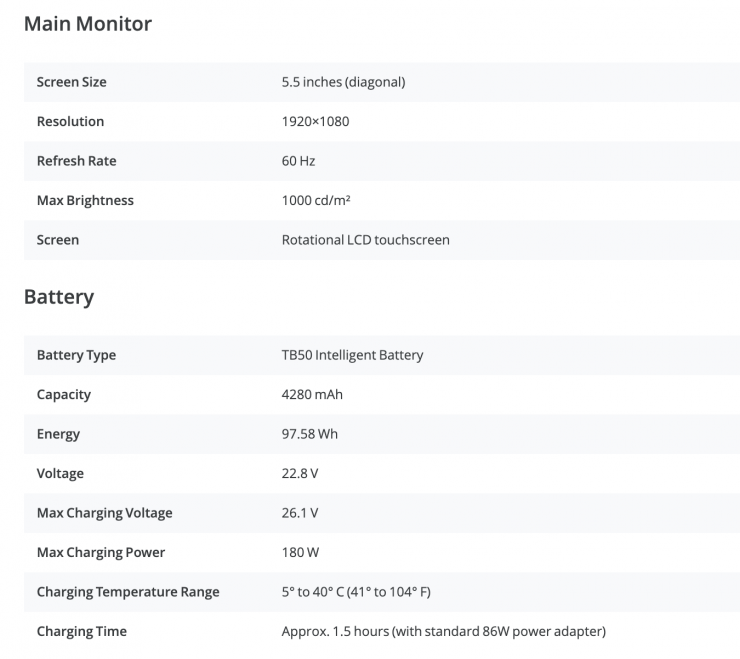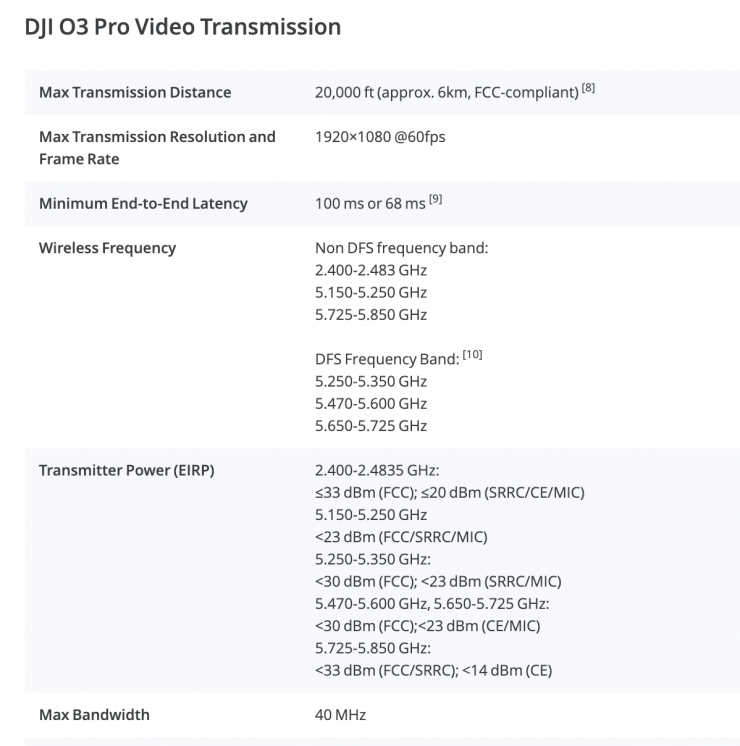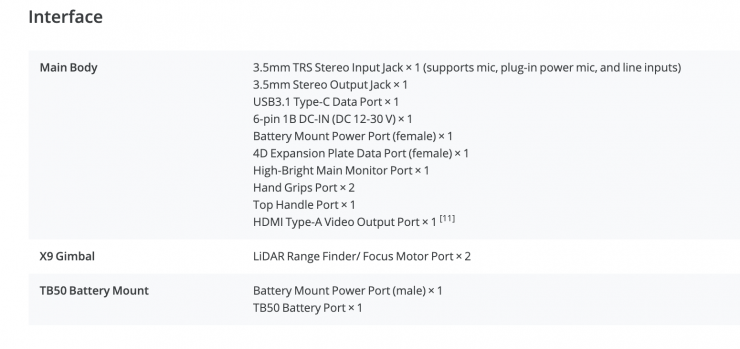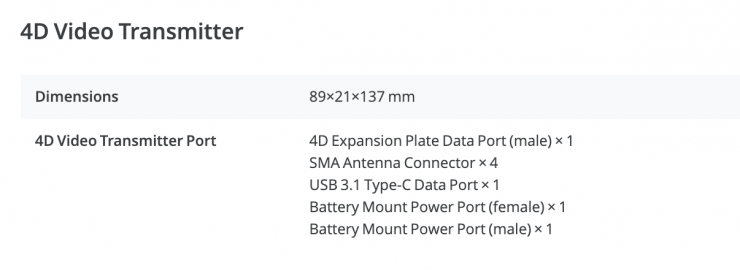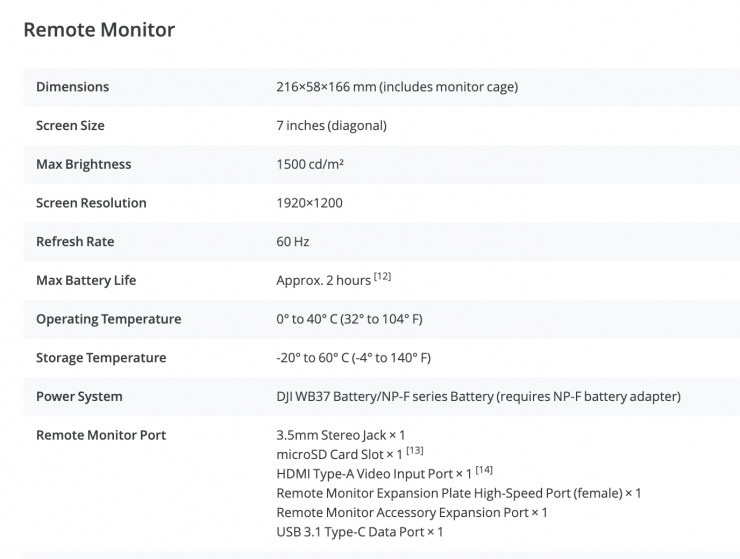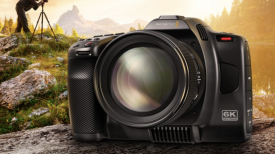DJI has announced the Ronin 4D, a fully integrated camera and gimbal solution that can capture 8K RAW. It also features an optional LiDAR focusing system and wireless transmission and control system.
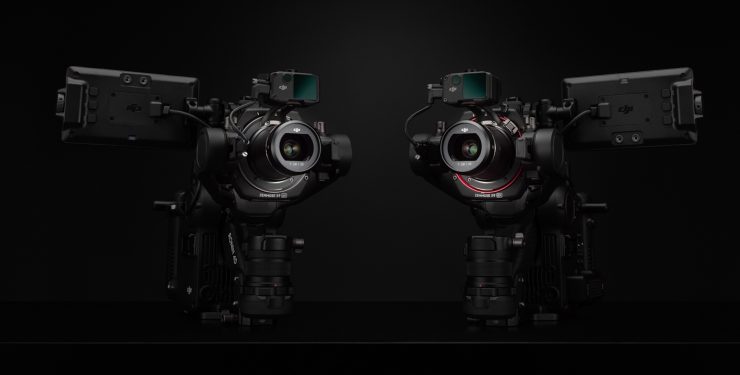
There are two versions of the DJI Ronin 4D available:
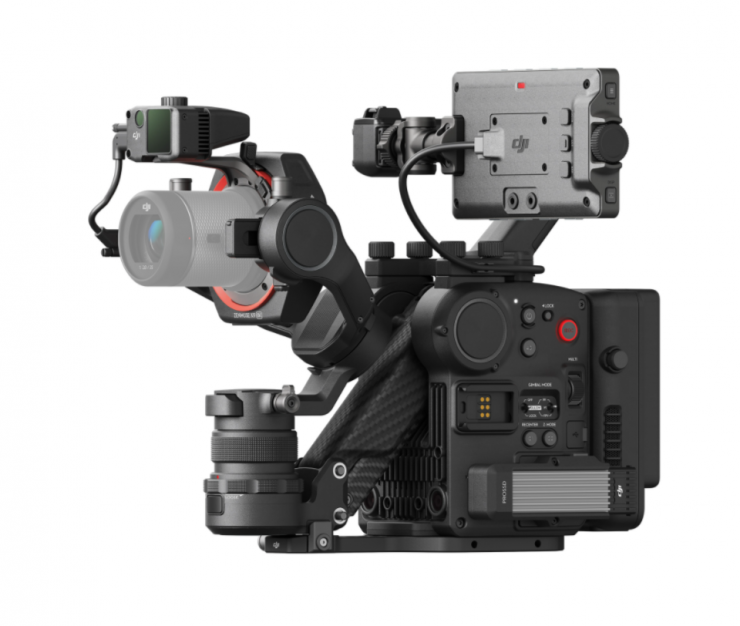
The DJI Ronin 4D was designed to give users an all-in-one stabilized camera solution. Instead of having to add a camera to a gimbal, DJI designed the Ronin 4D to incorporate everything in one package. This is great because you can pick it up and shoot straight away without having to worry about attaching a camera and a variety of other peripherals.
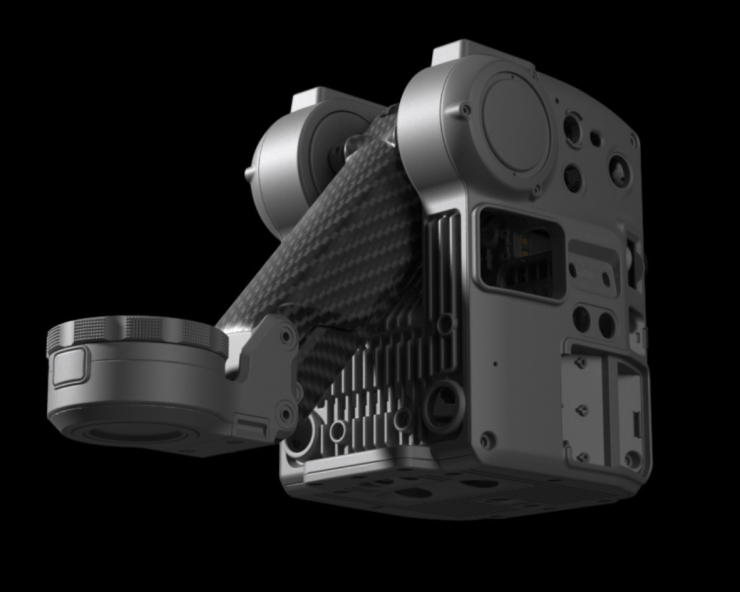
The main body of DJI Ronin 4D is crafted with aluminum-magnesium alloy and the Z-axis arm with carbon fiber. It has physical dimensions of 235×115×160 mm (main body). The main body weighs Approx. 1.45 kg, however, the whole set-up weighs approx. 4.67 kg (after installing all modules in the combo, excluding lens and storage card).
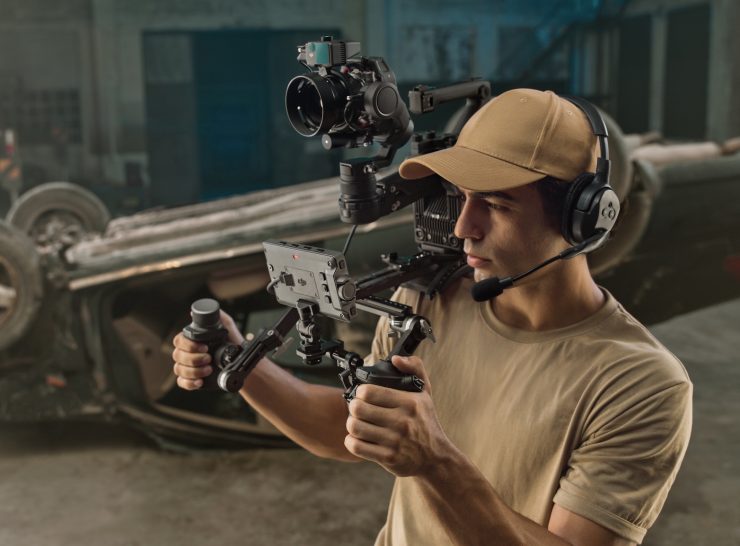
In a lot of ways, it is best to think of the Ronin 4D as a digital cinema camera with 4-axis image stabilization rather than a gimbal with a camera. DJI has designed it so it can be used handheld, on a tripod, by itself, or attached to a vehicle, crane, cable, etc.
Above you can watch DJI’s live stream announcing the Ronin 4D.
DJI had five goals when designing the Ronin 4D:
- The fastest system setup
- The lightest weight in hand
- The freest camera movement
- The most affordable 8K RAW
- The easiest learning curve
The most affordable 8K RAW? That is certainly not the case. Cameras such as the Blackmagic URSA Mini Pro 12K and Canon R5 can all capture 8K RAW for a lot less money than a Ronin 4D 8K. DJI states that “With DJI Ronin 4D, we use the power of technology to make cinema-standard production more affordable, cinema cameras more flexible, and cinematic imaging available to a boundless array of filmmakers.”
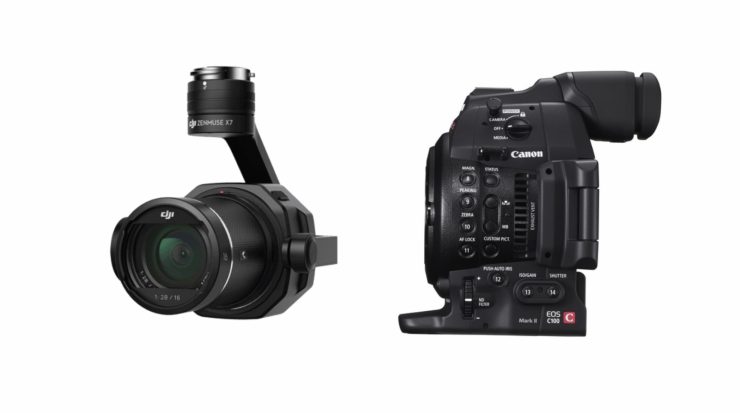
The Ronin 4D looks like a cross between a DJI Zenmuse X7 Camera and something like a Canon C100 Mark II.
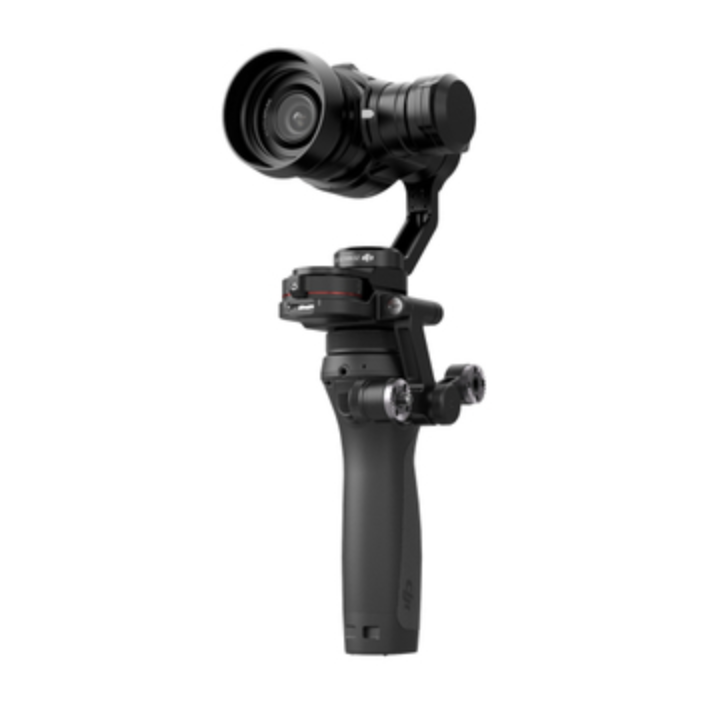
I think a lot of people have been wanting a solution like this for a long time. DJI did bring out the OSMO PRO years ago, which was an integrated camera and gimbal solution but it never really took off and DJI never made a replacement.
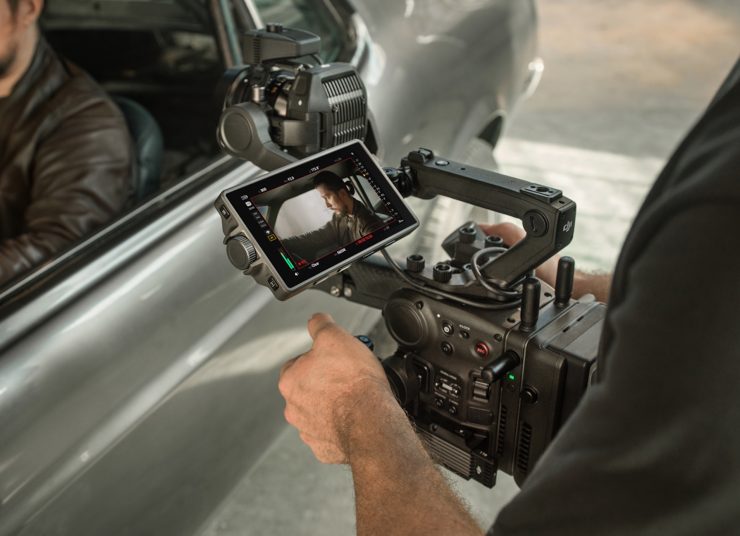
Key features
- In-built camera
- 4-axis stabilization system
- LiDAR focusing system
- Wireless transmission & control system
- 6K or 8K ProRes RAW recording
- 3 different recording media options
- High-bright monitor
- Hand Grips for control
Sensor
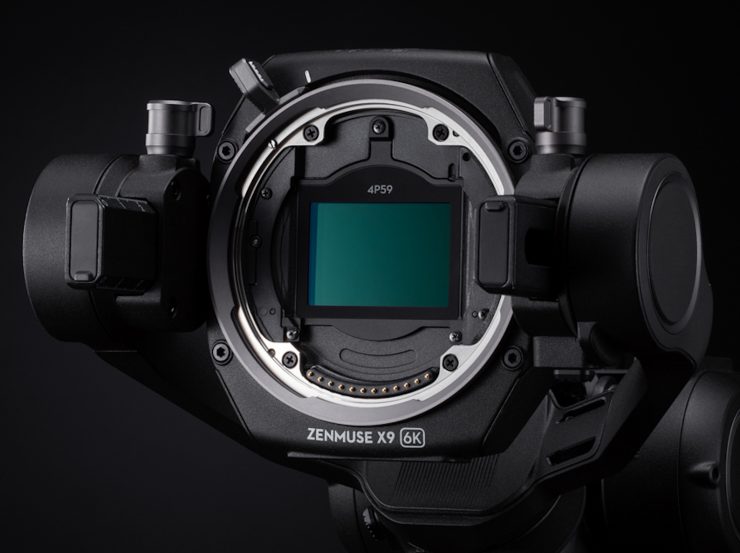
Both the X9-6K and X9-8K utilize a full-frame 36×24mm CMOS sensor. DJI also claims that they offer a high readout speed.
The effective pixel number of Zenmuse X9-8K is 35.4 MP and X9-6K offers 24.1 MP.
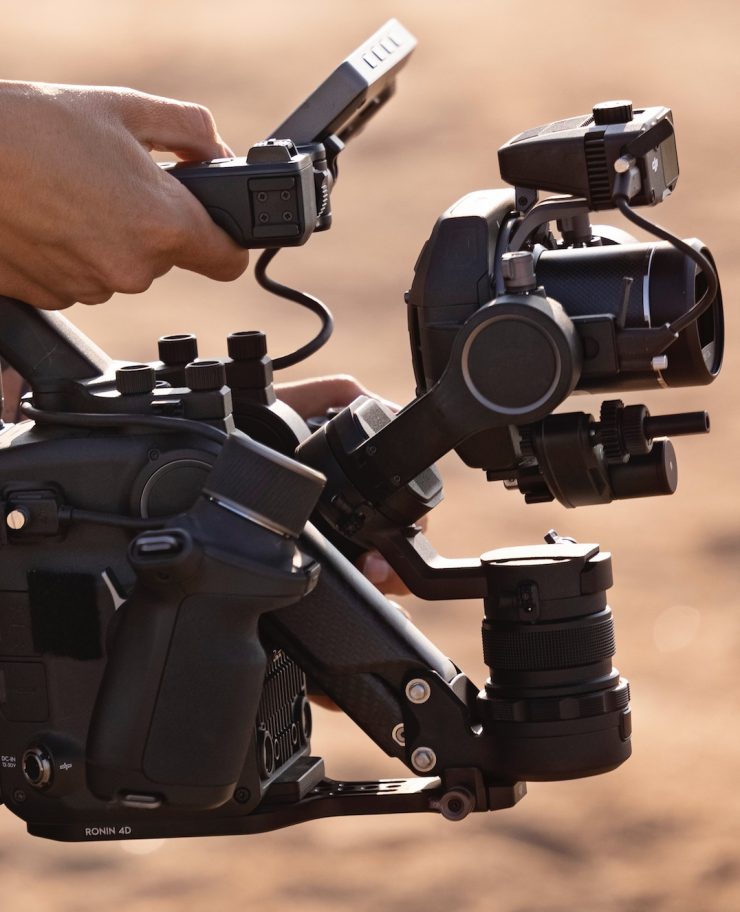
DJI is using a new processing engine that they are calling CineCore3.0. DJI claims that the new Zenmuse X9 has over 14 stops of dynamic range.
The new color system consists of a new D-Log curve and a D-Gamut RGB color space. D-Gamut covers the entire DCI-P3 color space.

Both the X9-6K has a dual-native EI of 800/4000. The X9-8K has a dual native EI of 800/5000. According to DJI, the Ronin 4D utilizes a proprietary DJI Cinema Color System (DCCS) that is claimed to deliver natural skin tones and enables effortless tonal consistency across a project when using different cinema cameras.
What lens mount is it and what lenses can you use?
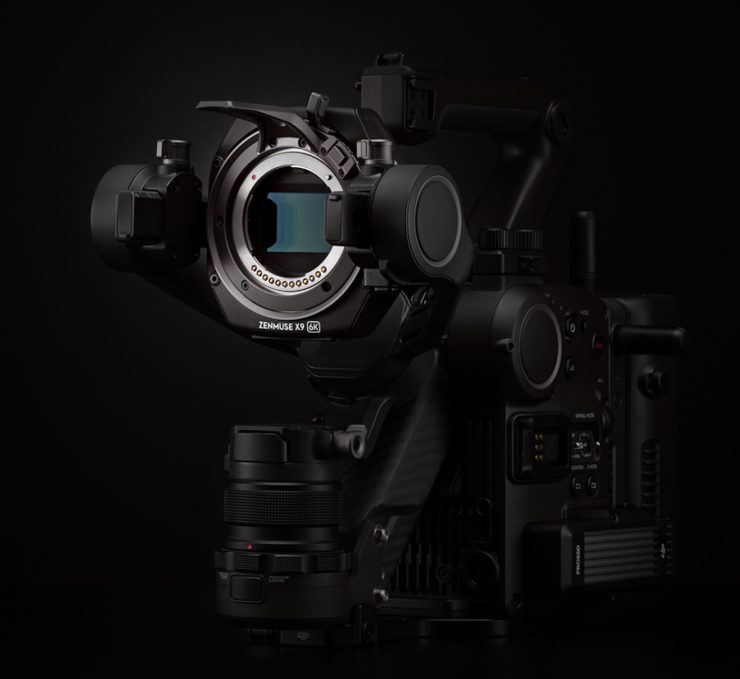

DL mount 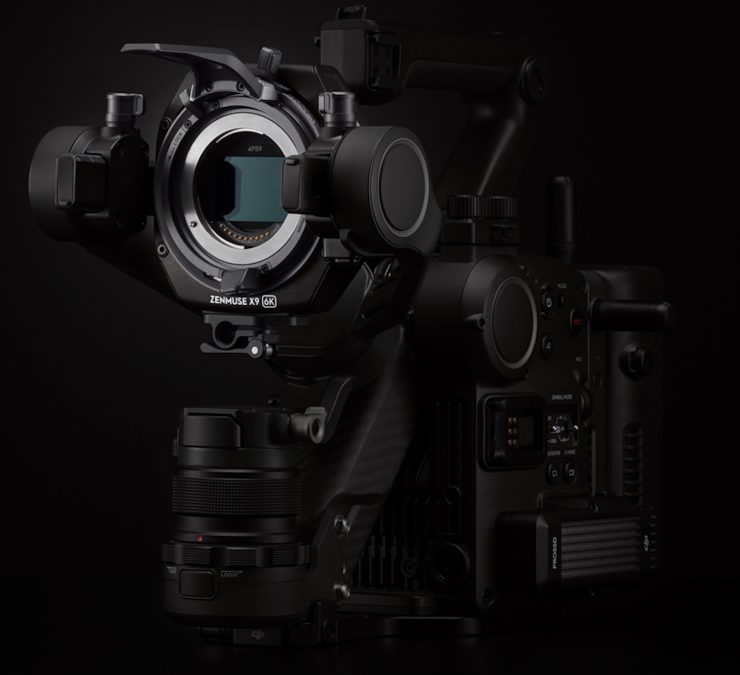
Sony E-mount 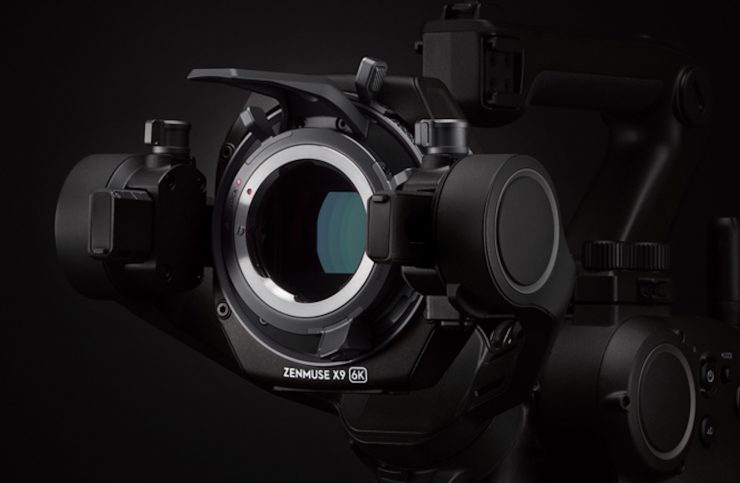
Leica M mount
Both versions feature an interchangeable lens mount design that allows connection to DJI’s proprietary DL mount, Leica M mount, and other mounts with short-flange focal distances, such as Sony E-mount.
The flange focal distance of the DL-Mount is less than 17 mm, which is roughly 1/3 of the size of a PL-Mount.
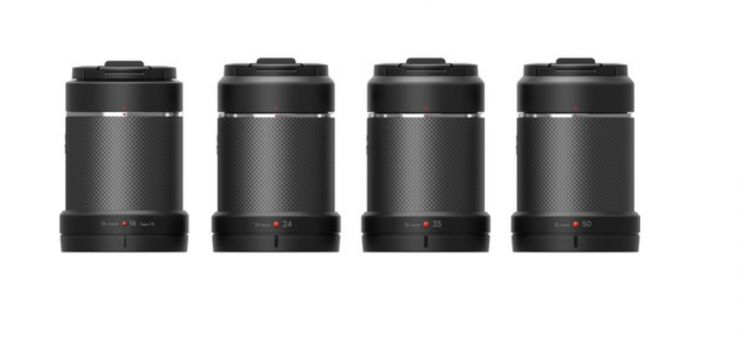
You can use lenses such as the DJI DL/DL-S Lens Kit for Zenmuse X which consists of:
- DJI 16mm f/2.8 ASPH ND Lens
- DJI 24mm f/2.8 ASPH LS Lens
- DJI 35mm f/2.8 ASPH LS Lens
- DJI 50mm f/2.8 ASPH LS Lens
However, I think more people are likely to use mounts such as Sony E, where you have a much wider range of lenses to choose from.
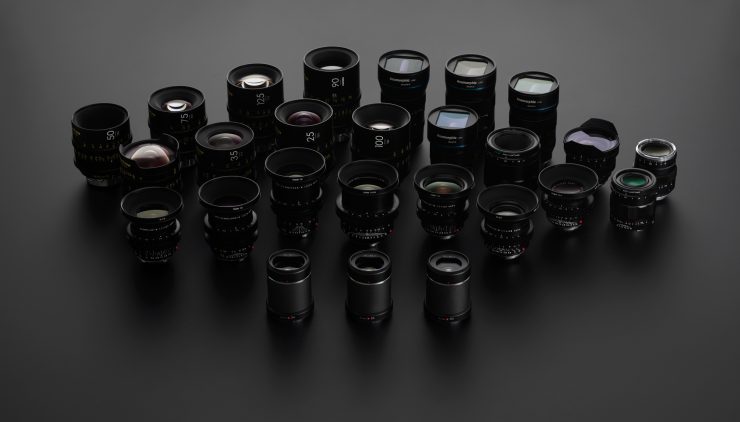
Above you can see some of the lenses that are supported by the Ronin 4D. I am not entirely sure what the maximum weight and size of a lens can be when using the Ronin 4D.
Recording & Recording Media
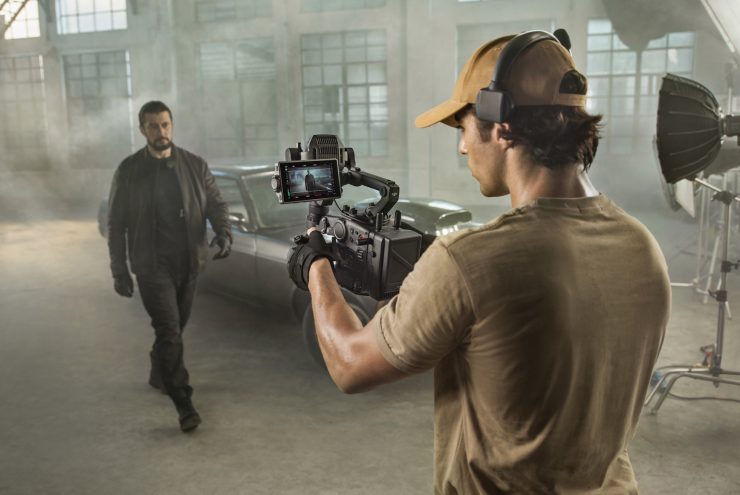
Both the X9-8K and X9-6K can internally record H.264, Apple ProRes (422HQ & 422) and ProRes RAW (RAW HQ & RAW). The Zenmuse X9-6K supports up to 6K/60fps and 4K/120fps, and Zenmuse X9-8K can do up to 8K/75fps.
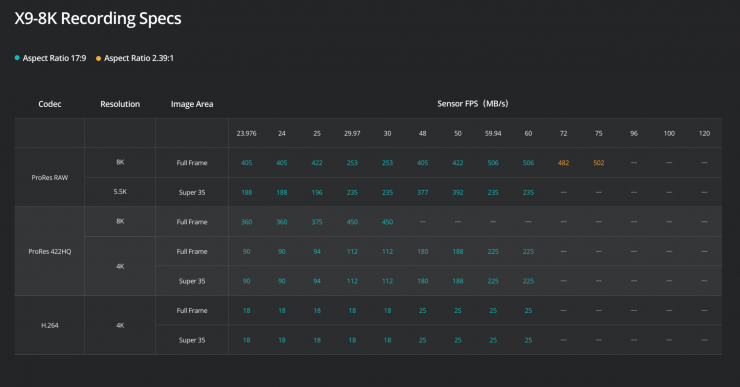
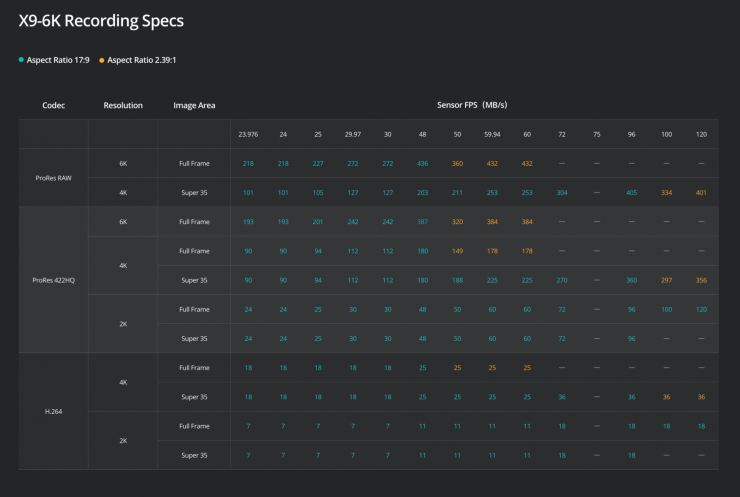
Above you can see detailed tables of all of the recording resolutions, frame rates and sensor modes.
X9-8K
- 8K 75fps (2.39:1)
- 8K 60fps (16:9)
X9-6K
- 6K 60fps (2.39:1)
- 6K 48fps (17:9)
- 4K 120fps (2.39:1)
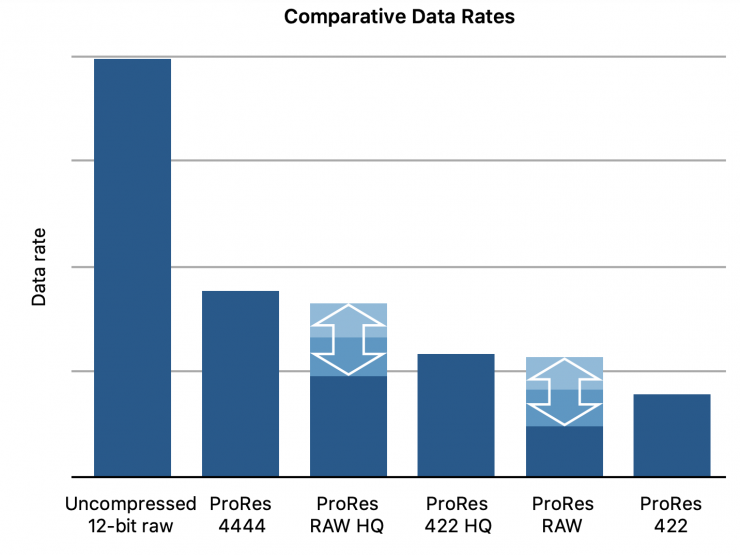
Apple ProRes RAW data rates generally fall between those of Apple ProRes 422 and Apple ProRes 422 HQ, and Apple ProRes RAW HQ data rates generally fall between those of Apple ProRes 422 HQ and Apple ProRes 4444.
- 1TB @ 8K30 ProRes RAW HQ: ~40 minutes
- 1TB @ 8K30 ProRes RAW: ~42 minutes
Above you can see a rough estimate of how much recording time you get when shooting 8K 30p ProRes RAW and ProRes RAW HQ to a 1TB drive.
| 8K DCI | ProRes RAW | ProRes RAW HQ |
| 24p | 160-370MB/s | 320-530MB/s |
| 25p | 160-390MB/s | 330-560MB/s |
| 30p | 200-480 MB/s | 400-680MB/s |
| 50p | 320-800 MB/s | 640-1120MB/s |
| 60p | 400-920 MB/s | 800-1320 MB/s |
Above you can see estimated data rates at various frame rates at 8K resolution when shooting in ProRes RAW and ProRes RAW HQ respectively.
The data rates when shooting 8K 60p in ProRes RAW are up to 3.95Gbps.
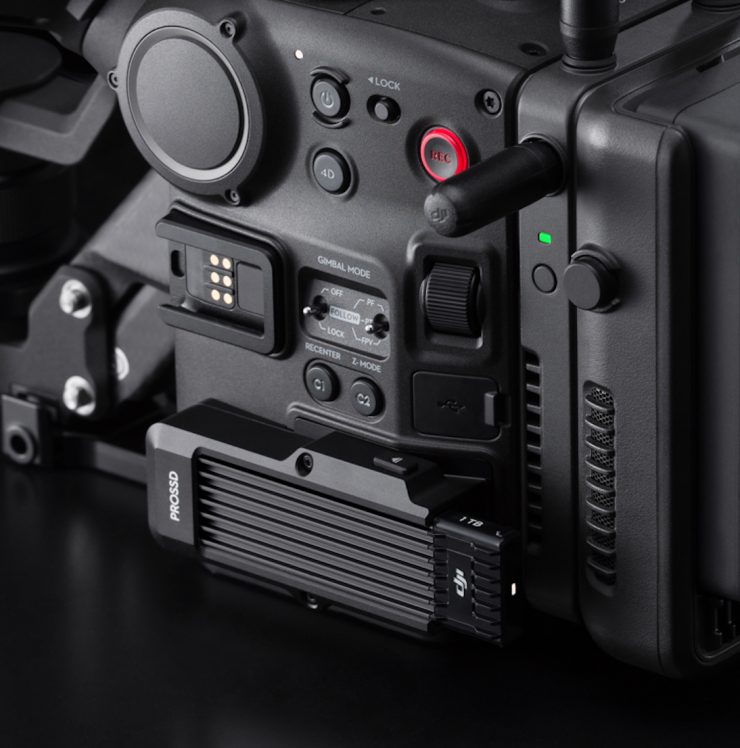
Three storage methods are offered with the DJI Ronin 4D:
- USB SSD
- CFexpress Type B
- DJI’s proprietary PROSSD 1TB
USB SSD is a good solution for those users recording in 4K who are looking for a cost-effective media solution. CFexpress Type-B card offers a good compromise between price and performance, while. DJI’s proprietary PROSSD 1TB delivers the best performance and highest stability for internal recording at maximum resolution and frame rates.
The PROSSD module attaches into the same section as where the CFexpress card goes.
CFexpress Type B Recording capabilities
ProRes 422 HQ:
6K: 23.976/24/25/29.97/30fps
C4K: 23.976/24/25/29.97/30/48/50/59.94/60/72/96/100/120fps
2K: 23.976/24/25/29.97/30/48/50/59.94/60/72/96/100/120fps
H.264:
C4K: 23.976/24/25/29.97/30/48/50/59.94/60/72/96/100/120fps
2K: 23.976/24/25/29.97/30/48/50/59.94/60/72/96/100/120fps
USB-C SSD Recording capabilities
ProRes 422 HQ:
C4K: 23.976/24/25/29.97/30/48/50/59.94/60fps
2K: 23.976/24/25/29.97/30/48/50/59.94/60fps
H.264:
C4K: 23.976/24/25/29.97/30/48/50/59.94/60fps
2K: 23.976/24/25/29.97/30/48/50/59.94/60fps
Built-in ND
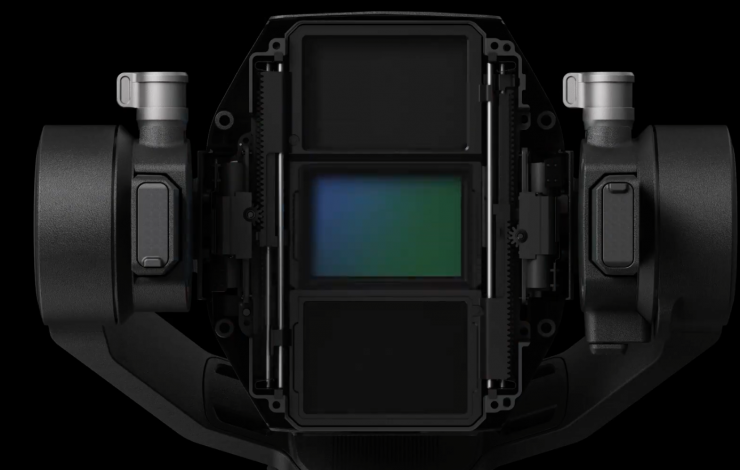
DJI has incorporated a built-in ND system for the Ronin 4D. Users can adjust the ND from a range of 2 up to 512 (9 stops). This is a physical ND system and not an electronic one.
Below are the ND steps that are available.
Clear, 2 (0.3), 4 (0.6), 8 (0.9), 16 (1.2), 32 (1.5), 64 (1.8), 128 (2.1), 256 (2.4), 512 (2.7)
LiDAR Focusing System & AF
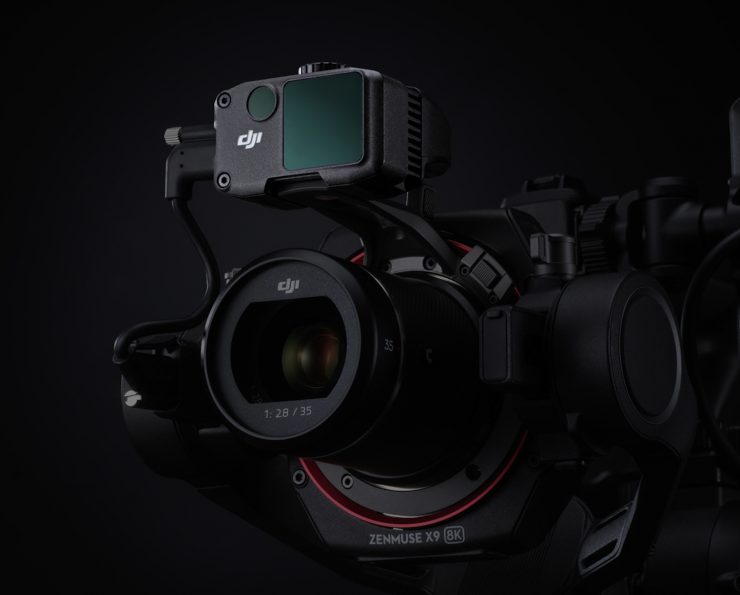
This is quite interesting and probably one of the most intriguing features that is available for the Ronin 4D. DJI has made an optional LiDAR Focusing System which they hope will simplify complex focus tools for a user-friendly experience.
What is LiDAR? LiDAR stands for light detection and ranging. Essentially it is a technique where a module is used to send out ten of thousands of bursts of invisible light that then reflect off an object in space. This information is then used to create a real-time 3D point cloud map. The LiDAR system continually updates this 3D map in real-time so that you can do accurate lens focusing. It will be interesting to see just how well it works on the Ronin 4D, because previous similar systems that were available from DJI only worked well if objects were centrally located towards the middle of the frame. The 3D focusing system of DJI RS 2 uses single-point focusing that only focuses on the center of the target, while the LiDAR Range Finder can cast 43,200 ranging points, enabling faster and more accurate focusing and providing visual focusing with the LiDAR Waveform.
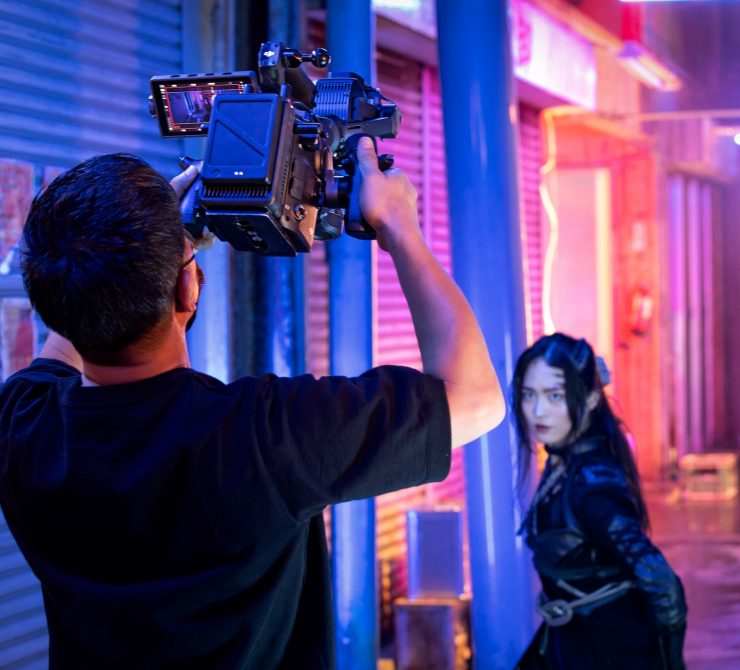
So what does LiDAR do on the Ronin 4D? The Ronin 4D’s LiDAR Range Finder creates a real-time 3D cloud of 43,200 points at once for a focusing range of up to 10m / 32.8ft. DJI claims that it also works well in low lighting environments.
The system can achieve the following three objectives:
- LiDAR Waveform– This is an assistive focusing display that allows users to locate and pull focus to points with extreme precision
- Autofocus– 3rd party manual lenses can gain AF via the X9 Focus Motor. AF is also maintained when using ActiveTrack Pro.
- Automated manual Focus– Allows
Along with LiDAR, theRonin 4D offers manual focus, autofocus, and DJI’s unique Automated Manual Focus (AMF). When using manual focus, the DJI Ronin 4D provides LiDAR Waveform, an assistive tool that allows you to locate focus points and pull focus with extreme precision. Autofocus is, well, autofocus. Just how well the AF works on the Ronin 4D will be interesting to see and it will probably depend on the lens mount and lens you are using. DJI has never been known for having great AF. Automated Manual Focus combines the best of both modes to automatically rotate the focus wheel while following the focus point, allowing the operator to intervene manually at any time.
4-Axis Stabilization System
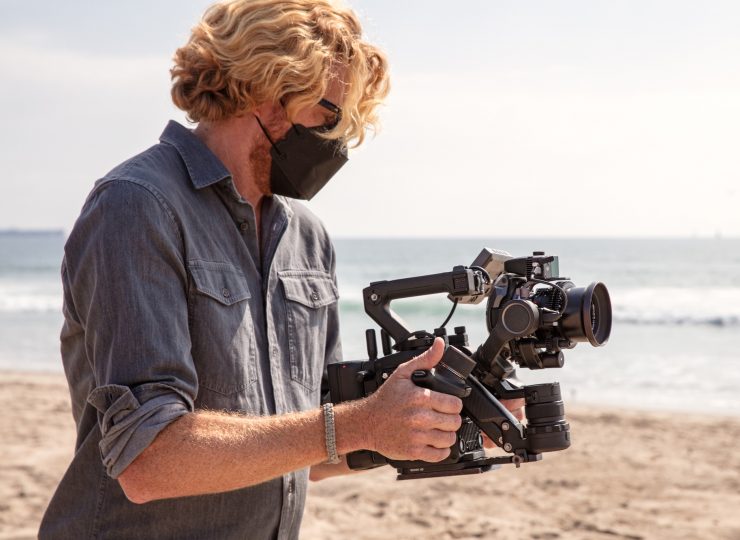
The Ronin 4D features a 4-Axis stabilization system. What’s the 4th axis? Well, it’s the Z-axis. This is the axis where when you are walking or running with most gimbals causes that up and down movement. The Ronin 4D’s Z-axis vertical stabilization eliminates vertical shake via forward and downward visual sensors, dual ToF sensors, a barometer, and a gyro sensor.
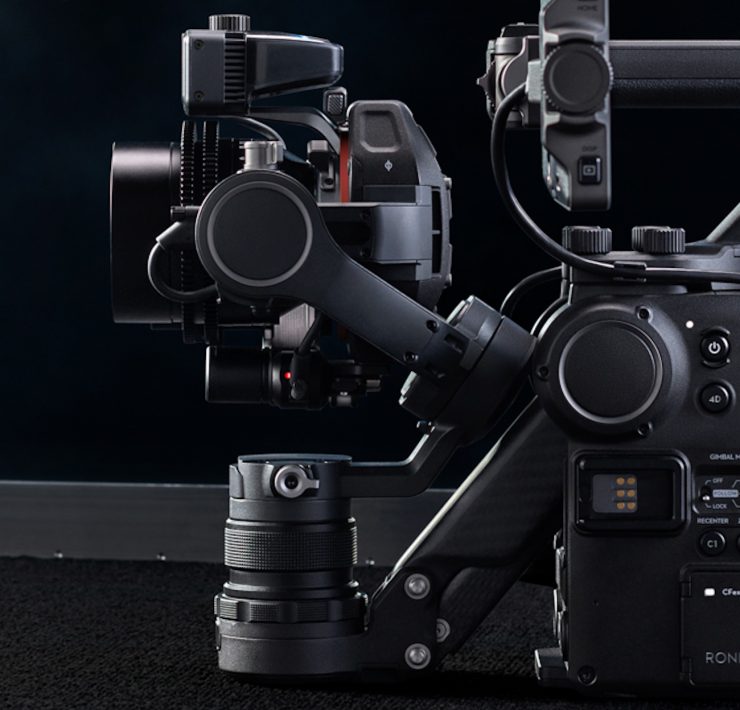
To my knowledge, this is the first product on the market with a Z-axis. If you look at the front of the Ronin 4D you will see an arm that goes up at an angle from the front of the gimbal. This is what helps control that up and down movement.
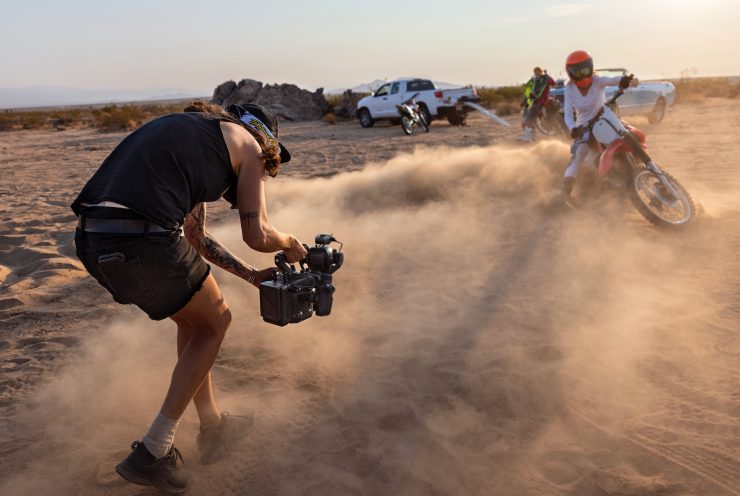
DJI claims that users can create smooth footage while walking, running, going up, or downstairs, without any up and down movement that is associated with the operator walking or running. They also state that the Ronin 4D enables you to have a smaller and lighter package than when using cinema cameras on a professional 3-axis stabilizer.
The Ronin 4D does support underslung shooting, but the Z-axis is not available in underslung mode.
As you would expect from a DJI product, the Ronin 4 also features ActiveTrack Pro so that users can track subjects.
How is it powered?
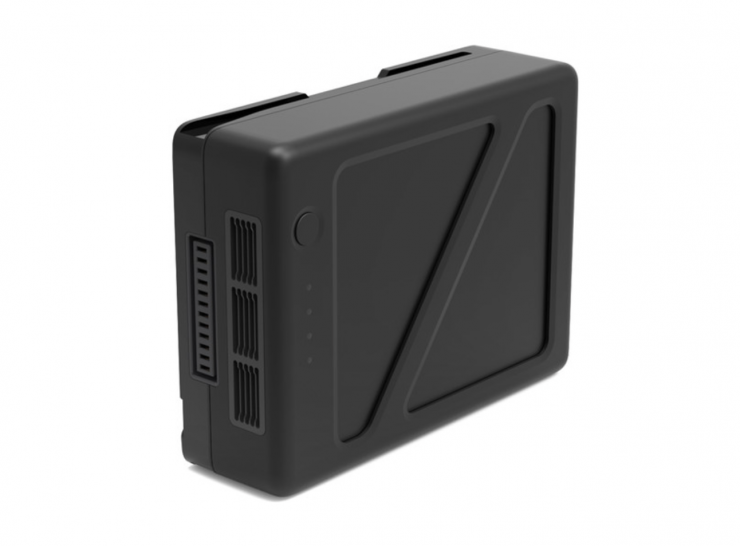
Both the Ronin 4D 6K and 8K are powered via a DJI TB50 Intelligent Battery that sits on a battery plate. This is the same battery that is used on the Ronin 2 and DJI Inspire 2. These batteries have a 4280mAh capacity and retail for around $180 USD.
High Bright Monitor, Wireless Transmission & Control System
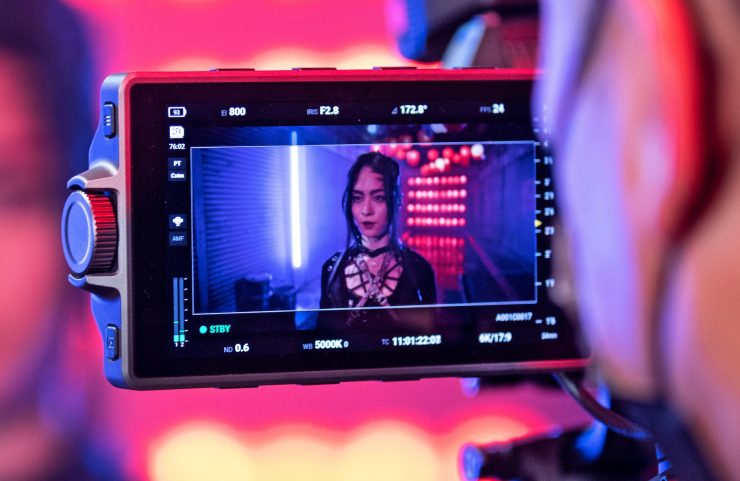
The Ronin 4D comes with a 1000nit high bright monitor as standard. It looks like DJI has taken a page out of ARRI’s book and placed all of the screen overlays and information on the peripherals of the display so you can clearly see what you are doing.
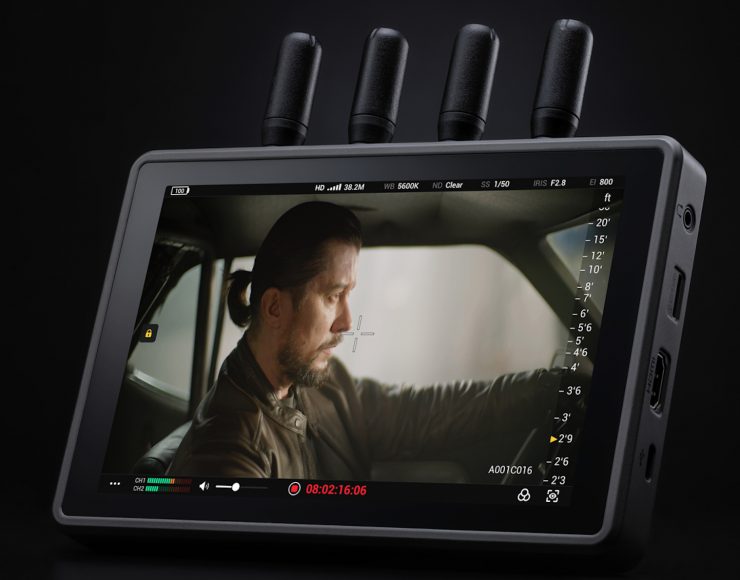
The optional High-Bright Remote Monitor integrates a wireless video receiver into a 1,500-nit, 7-inch monitor. The built-in gyro sensor also turns the monitor into a motion controller for movement-based camera control. It can also connect to the Ronin 4D Hand Grips, DJI Master Wheels, DJI Force Pro, or the new DJI Three-Channel Follow Focus to modernize coordinated shoots. When several remote monitors are used in conjunction, each device can play back material separately with independent LUT, loaded without interfering with other monitors. The monitor’s built-in microSD card slot supports up to 1080p/60fps proxy footage recording.
Multiple receivers can be connected to the 4D Video Transmitter so you can switch between Ronin 4D feeds.
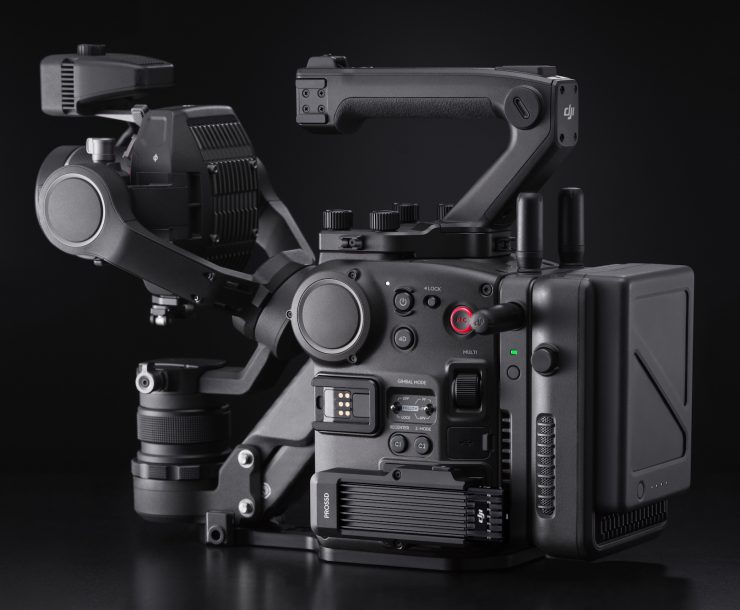
According to DJI, the 4D Video Transmitter can send up to 1080p/60fps from distances of 6km / 3.72 miles away. This feed is claimed to have ultra-low latency and good stability.
In addition to 2.4GHz and 5.8GHz, O3 Pro also supports the DFS frequency band, significantly improving stability and anti-interference performance, even in crowded signal environments and locations that feature complex architectural structure
Hand Grips
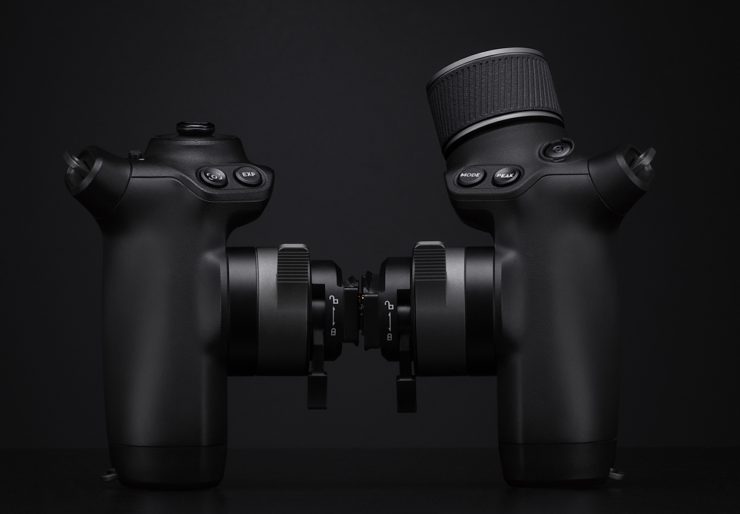
Both versions come with a set of hand grips that allow you to control various aspects of the Ronin 4D.
Audio & Expansion Plate
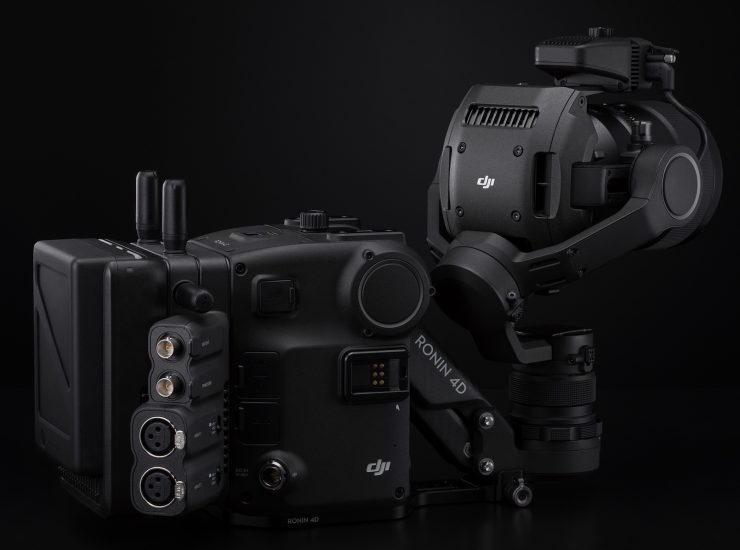
The DJI Ronin 4D has built-in microphones to support 2-channel 24-bit audio, as well as two 3.5mm jacks on the body.
The expansion plate adds two XLR inputs and an SDI out and a timecode out.
Pricing & Availability
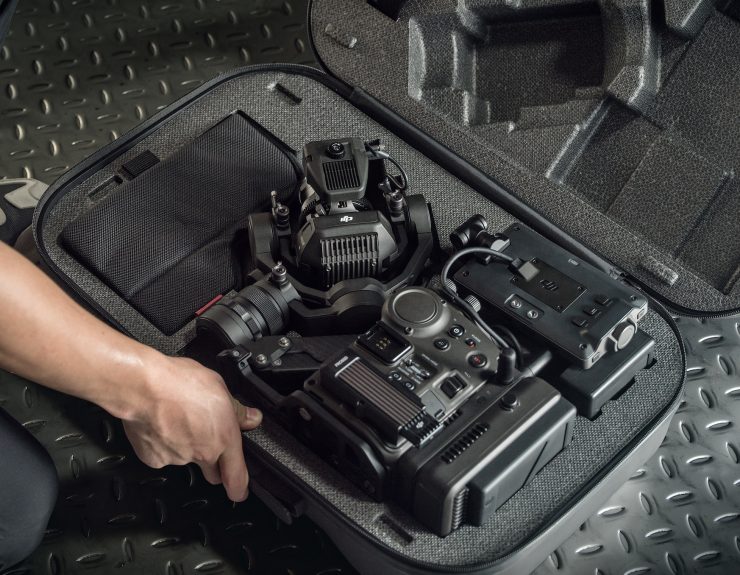
Below is how much the two DJI Ronin 4D options cost and what is included:
- Zenmuse X9-6K Gimbal Camera
- LiDAR Range Finder
- Ultra-Bright Main Monitor
- Hand Grips
- Top Handle
- TB50 Intelligent Battery
- Battery Mount
- Carrying Case
- Zenmuse X9-8K Gimbal Camera
- PRO SSD 1TB and SSD Mount
- Ultra-Bright Main Monitor
- Hand Grips
- Top Handle
- TB50 Intelligent Battery
- Battery Mount
- Carrying Case
Both Ronin 4D versions come with a 2-year warranty.
Optional accessories
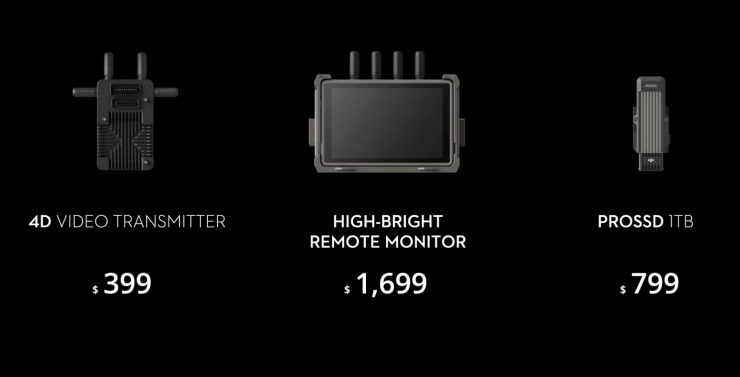
The following items are available as optional extras:
- 4D Video Transmitter
- Ultra-Bright Remote Monitor
- DJI PROSSD 1TB
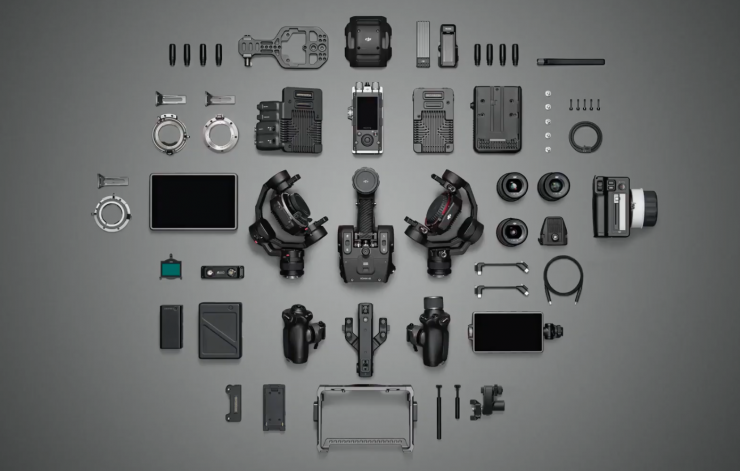
There are also plenty of other accessories that can be used within the ecosystem.
Full Specifications
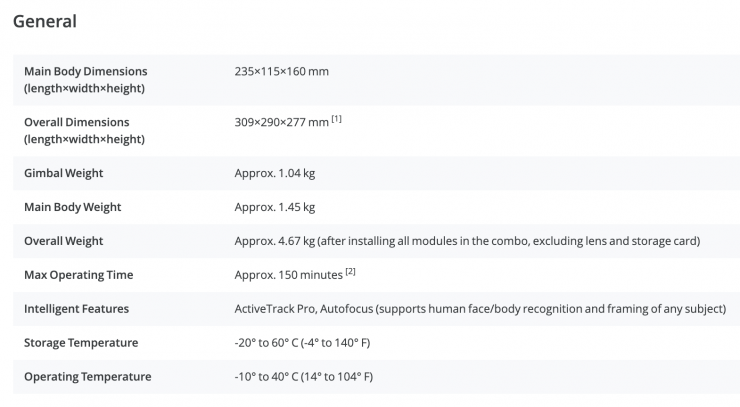
Thoughts
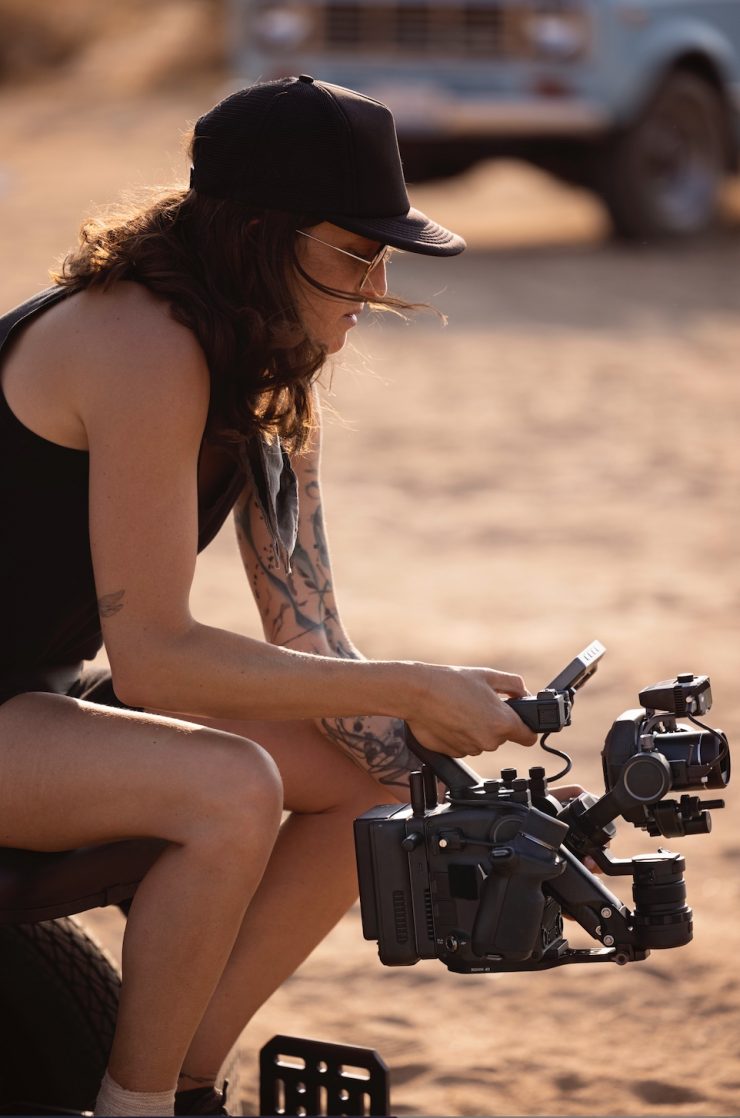
This is a bold, but calculated move by DJI, and it shows that they are serious about moving into the digital cinema camera space. You have to applaud DJI for thinking outside of the box and coming up with a unique product.
It remains to be seen how the Ronin 4D actually compares to a DJI Ronin RS2 and a good mirrorless or small-sized digital cinema camera.
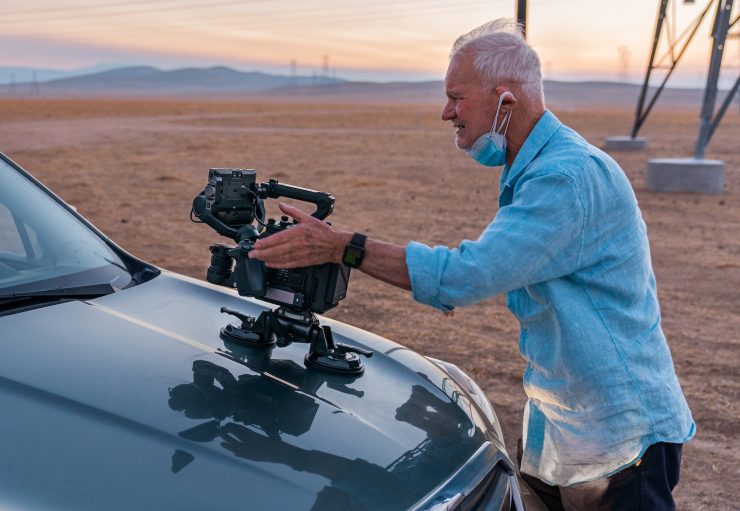
It is an interesting concept and one that DJI hopes entices a lot of filmmakers to jump on board. It seems as though quite a lot of thought and development has gone into the Ronin 4D.
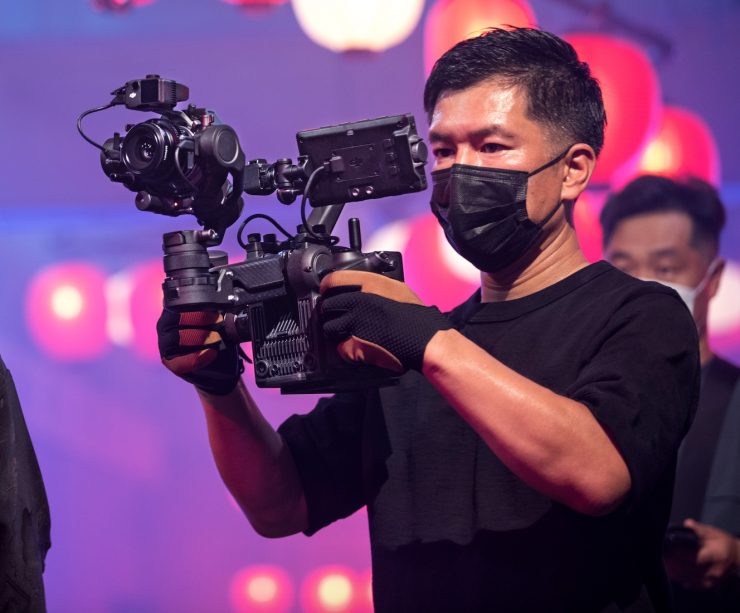
Leading cinematographers across the globe have been testing prototype after prototype, giving constant feedback, and working with DJI on the development of the Ronin 4D. In addition, starting today, DJI is announcing that eight of the industry’s leading and award-winning DPs will work directly with DJI and Ronin 4D for their upcoming works. These include: Rodney Charters, ASC, CNSC, NZCS; Takuro Ishizaka, JSC; Rachel Morrison, ASC; XiaoShi Zhao, CNSC; and Academy Award winners for Best Cinematography: Erik Messerschmidt, ASC; Claudio Miranda, ASC; and Peter Pau, HKSC.
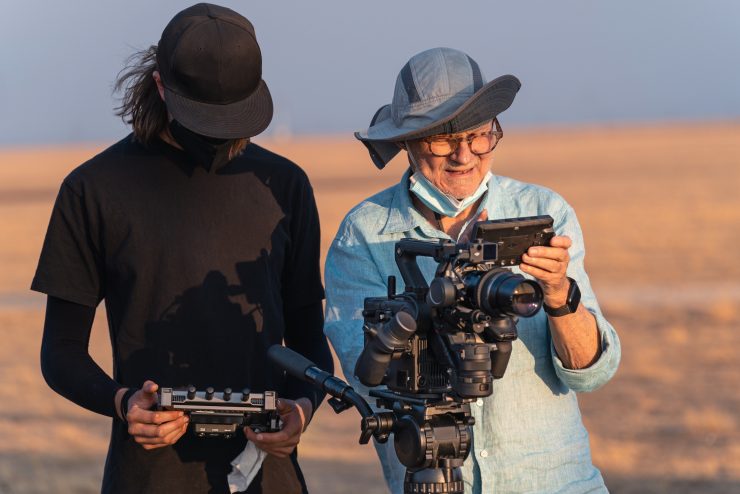
At first glance the pricing might appear to be a little steep, however, if you had have said to me 3 years ago that I could have an all-in-one gimbal camera system that could shoot 8K ProRes RAW with a LiDAR system I would have said where do I sign up. However, this is 2021 and the Ronin 4D does face stiff competition from a range of affordable digital cinema cameras. In saying that, there literally isn’t anything else on the market that you could compare this to.
Having an all-in-one system that you can just pick up and start shooting with does make a lot of sense, but on the flip side, it does somewhat lock you into a particular system and you do lose that versatility of being able to swap over camera systems. Of course, the proof will be in the pudding. Specifications and features don’t necessarily make a good camera system. Time will tell just how good the DJI Ronin 4 is.
What do you think of the DJI Ronin 4? I am interested to hear what our readers think of this as both a product and a concept. Let us know in the comments section below.

